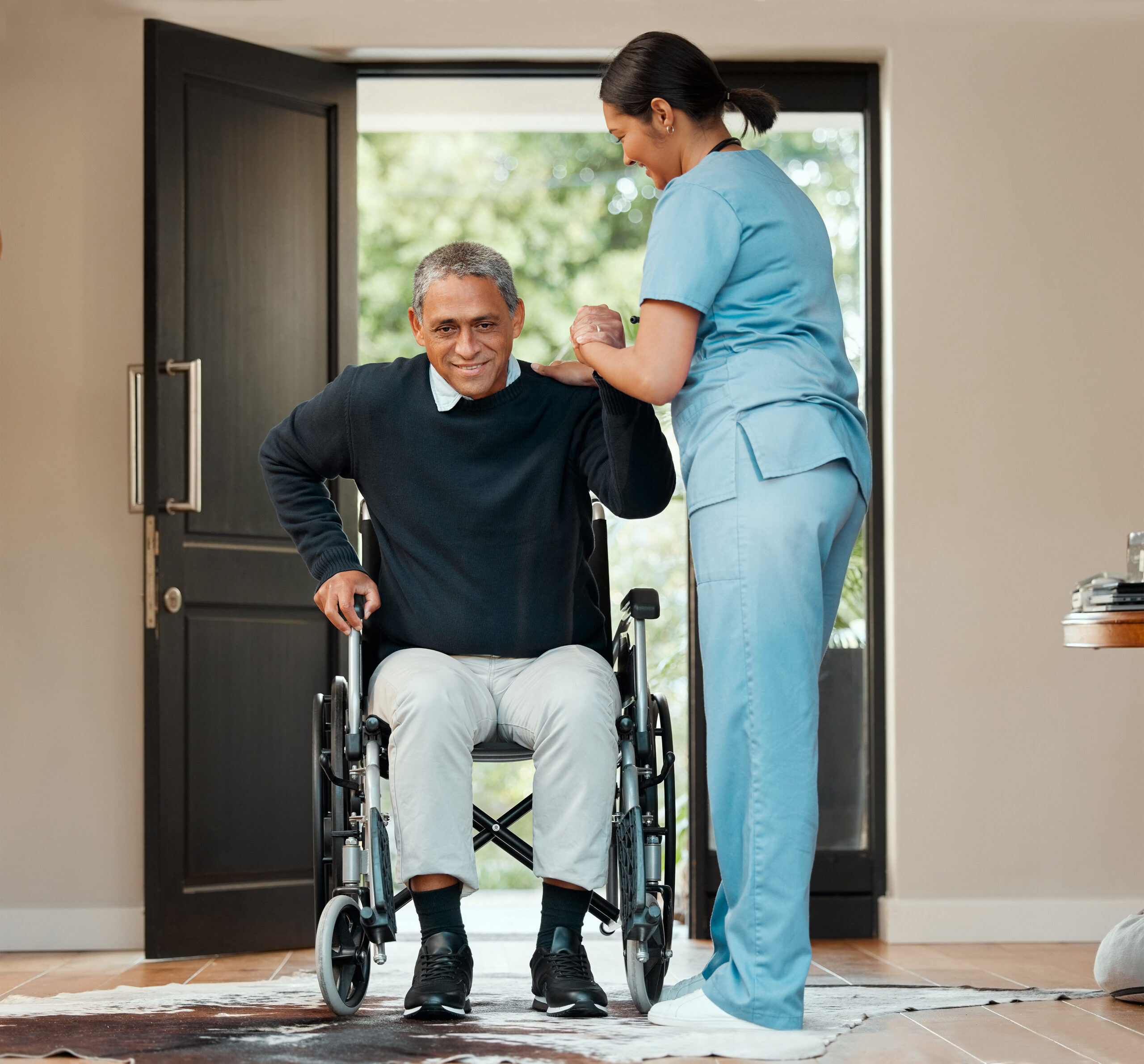As case managers and occupational therapists, you know how critical the hospital-to-home transition is. A well-planned discharge doesn’t just speed up recovery—it can prevent unnecessary hospital readmissions. At Amramp, we partner with healthcare professionals to ensure patients go home to environments that are safe, accessible, and recovery-ready.
Why Readmissions Happen—and the Home’s Hidden Role
Hospital readmissions don’t always result from medical issues—they often stem from the home environment itself. Stairs, poor lighting, slippery surfaces, and lack of accessibility equipment are common contributors to falls and noncompliance with follow-up care.
- A study highlighted by Becker’s Hospital Review found that more than 50% of hospital readmissions are tied to social determinants of health, including housing and environmental conditions.
- Research from Penn Medicine revealed that patients discharged to home care—rather than to skilled nursing facilities—experience higher readmission rates, reinforcing the need for proper support in the home setting.
 Photo By Copper Hound Pictures
Photo By Copper Hound Pictures
Where You Come In: Make Home Safety Evaluations Part of Discharge Planning
As a discharge planner or OT, you’re on the front lines of preventing avoidable returns to the hospital. One of the most effective strategies? Incorporating a home safety evaluation into your standard discharge process.
To make this easy and repeatable, we created the Amramp Home Safety Checklist—a free, downloadable tool that helps you and your team quickly assess home environments for fall risks, accessibility barriers, and modification needs.
High-Impact Home Modifications to Reduce Readmissions
We’ve worked with thousands of hospitals and rehabilitation teams nationwide to implement fast, affordable accessibility solutions, such as:
- Modular Wheelchair Ramps: Custom designed and ready for rapid installation—ideal for safe entry and exit.
- Grab Bars and Handrails: Essential in bathrooms, stairwells, and transitional spaces.
- Stair Lifts: Give patients continued access to upper levels of the home, both indoors and outdoors, without risking a fall.
- Threshold Ramps & Doorway Widening: Improve mobility for wheelchair and walker users.
- Non-slip Flooring and Enhanced Lighting: Simple changes that make a big difference in safety.
These aren’t just adjustments—they’re life-saving interventions and injury-prevention solutions that support mobility, independence, and confidence at home.
 A Model of Success: The CAPABLE Program
A Model of Success: The CAPABLE Program
Programs like CAPABLE (Community Aging in Place—Advancing Better Living for Elders), developed by Johns Hopkins School of Nursing, demonstrate the power of combining nursing care, occupational therapy, and home modifications to promote independent aging.
Yet, as reported by the San Francisco Chronicle, the program’s expansion is limited by funding and policy gaps—leaving many patients without access to similar resources. That’s where local coordination between hospitals, OTs, and accessibility providers becomes crucial.
Aligning with National Priorities
The Agency for Healthcare Research and Quality (AHRQ) highlights preventing readmissions as a national goal. In fact, reducing avoidable hospital readmissions is a key focus of the CMS Hospital Readmission Reduction Program (HRRP).
By collaborating with trusted accessibility providers like Amramp, you can support these national goals—and improve outcomes in your own community.
Not Sure Where to Start? Use Amramp’s Resources to Help Your Clients
Help your patients transition home safely. Download the Amramp Home Safety Checklist today to integrate into your discharge planning toolkit.
Or, contact us to schedule a free home assessment before your patient is discharged. With rapid installs, nationwide service, and decades of experience, we’re your partner in keeping patients safe and supported where they heal best—at home.




